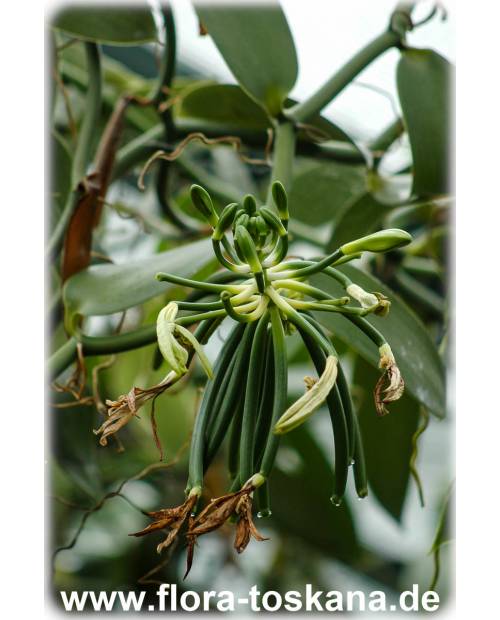













Vanilla planifolia is from the orchid family. We are usually not so much interested in its flowers as we are in the aromatic pulp of its pods filled with millions of tiny seeds.
When you use vanilla beans in cooking, you are holding the fruit of an orchid (Vanilla planifolia) in your hand. The tiny seeds inside the dark brown pods are coated in a sticky pulp that contains the vanilla flavor. The pods are preceded by yellow orchid flowers, which are smaller and more inconspicuous than some of their showier relatives. You should pollinate the flowers by hand, because our native insects cannot do what hummingbirds do in the tropics. Inside the flowers, you need to push aside a tongue-shaped flap that separates the male pollen from the female stigma. Using a narrow tool (such as a toothpick), you can imitate the hummingbird's beak and carefully release the blockage while gently shaking the flowers. Do this once the flowers are open and the pollen will be transferred to the stigma. Vanilla orchids are twining plants with oblong-oval, succulent leaves. Their shoots, which are meters long when old, develop aerial roots with which they cling as well as absorb humidity and nutrients from the air. Vanilla orchids grow very slowly at first. Only established, older plants increase in growth and can then even climb up to the roof ridge of conservatories or heated greenhouses. The temperature should be constantly above 15 °C. Water very moderately with low-lime rainwater to prevent the roots from rotting. Spraying with hand-warm water is always welcome.
![]() Quality: well-known spice plant (vanilla beans); orchid flowers; climbing growth that saves space
Quality: well-known spice plant (vanilla beans); orchid flowers; climbing growth that saves space![]() Use: all year round in heated winter gardens or bright rooms
Use: all year round in heated winter gardens or bright rooms
Data sheet
You might also like
Customers who bought this product also bought: